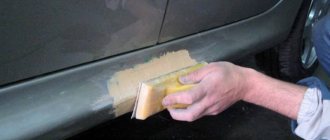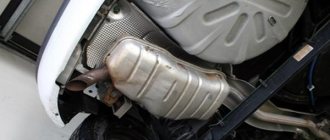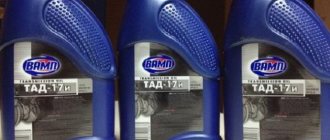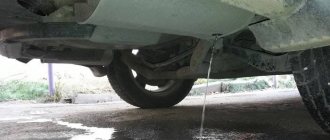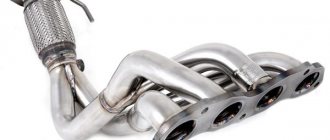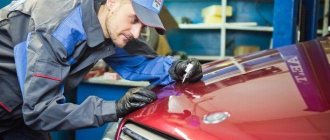Content
What you need to paint a car
What paint is better to paint the muffler?
Preparing for the painting process
Coloring instructions
Recommendations from the author
To keep a part of one of the most important car systems in proper condition, you will need paint for the muffler.
It is best to use silver paint, which is what the muffler is coated with at the factory. The exhaust system is one of the main mechanisms for the correct and smooth operation of the entire vehicle. Its task is to remove exhaust gases that are formed in the combustion chamber. All parts of the system heat up during engine operation to very high temperatures, amounting to hundreds of degrees. The exhaust pipe, when heated, quickly becomes unusable, and the paint on it, under the influence of high temperatures, simply burns. This reduces the protection of metal parts, and they are subject to corrosion and other negative influences.
The pipe is located in the lower part of the car, therefore it is subject to the mechanical influence of sand and small stones that fall on it during movement. The action of chemical reagents also negatively affects the condition of the metal. Moisture is the main enemy of metal. Insufficient protection will lead to rust and damage the exhaust pipe very quickly.
During the manufacturing process of vehicles, parts are necessarily treated with high-quality anti-corrosion agents, however, high temperatures destroy the protective layer and to keep the car in the required condition, the protective layer must be regularly updated. Car owners who monitor the condition of their iron friend are always faced with the question of how to paint the car muffler.
To extend the life of the exhaust pipe, drivers resort to the following tricks:
- drilling holes for condensate to escape;
- painting the exhaust pipe with special paint that prevents corrosion.
One hole in the muffler body will be enough. The resulting condensate will drain through it, preventing the accumulation of water and rusting of metal parts.
Painting will serve as protection against rust and prevent rapid aging of the metal due to high temperatures, which can reach four hundred degrees.
What you need to paint a car
Painting a car is a very responsible process. It is best to use the services of special auto painting workshops. They have all the necessary equipment and materials. The work will be completed quickly, and you will be confident in the quality of the painting.
Pneumatic spray gun
If you still decide to carry out painting work, then before you start, you need to prepare the following equipment:
- spray gun;
- compressor;
- polishing machine or drill with attachments;
- mobile light source;
- construction hair dryer;
- grinding machine (grinder);
- personal protective equipment.
All of the above tools may not always be needed. A spray gun can easily replace canned paint if you don’t need to paint the entire car body. It is not advisable to purchase a hair dryer for painting individual parts. But gloves, a protective suit and a painting mask should not be neglected.
In addition to the necessary tools, the following materials are required to paint a car:
- abrasives;
- putty;
- priming;
- solvent and degreaser;
- dye;
- varnish
All painting materials should be purchased of high quality, preferably from trusted manufacturers. Following the instructions will help you avoid trouble and the work will not have to be redone. To understand the question of how to paint the muffler, you should know the features of this car part. Due to exposure to high temperatures, ordinary paint cannot be used to paint the exhaust pipe. It will quickly burn and the work will have to be done again. There is a wide selection of paint and varnish products from different brands on store shelves. Thermal paint for the muffler is the best option for painting this part.
What paint is better to paint the muffler?
Parts such as the muffler cannot be painted with the usual paint that we use to paint a car body. To get the best results and lasting effect, you should use heat-resistant paint. Some drivers use fireplace paint for painting work. But this is absolutely not rational. There are currently many special heat-resistant dyes on the shelves of auto stores.
Silicone-based heat-resistant paint for car mufflers has proven itself to be excellent. It can withstand high temperatures and has excellent durability. Apply in several layers, allowing to dry. There is no need to prime the surface before painting, which greatly simplifies the process.
There is a certain feature that distinguishes heat-resistant paint from regular paint. In order for it to dry, the surface after painting must be heated to a temperature of 160–200 degrees. If this is not done, the layer can be easily damaged. Because the paint will remain soft. It hardens only when heated. After painting, the muffler is heated to the desired temperature using a hairdryer. If you don't have one, you can use the oven. The time required to dry the layers is 15–20 minutes.
But the best option is to paint the calipers with silver enamel. Surely it has been tested and will not require large expenses.
Heat-resistant enamel KUDO
Preparing for the painting process
Any process, especially when it comes to painting, requires careful preparation. This is the only way to get the expected result, and the work will delight you for a long time. Cleaning the surface is the most important step, and if it is not done well enough, you may not waste effort on other processes. The result will be disastrous in any case.
The surface of the muffler should be cleaned of old coating and the metal should be free of rust and other contaminants. If traces of rust are not completely removed, the part will continue to rust, destroying both the part itself and the layer of paint on it.
Cleaning methods:
- Clean with a brush with metal bristles or a drill with cleaning wheels. If the rust has eaten a hole through the surface, cover it with a layer of putty.
- To remove the previous layer of paint, you can use chemical removers designed for this purpose. They can remove organic compounds and waterborne paints.
- Using a heat gun can cause the paint to bubble up and remove it easily.
Painted the muffler pipe
- Astronauts! Which zappa is here? - And there... a rusty nut, dear. - Everything here is rusty... - And this one is the rustiest.
Overall, the rustiest part on my ATV is the muffler pipe, top to bottom. It’s not particularly visible (if you don’t look into the inside), but it’s a pity for the metal. Once exposed, it rusts, and will continue to do so.
Luckily, there are special heat-resistant exhaust paints that can withstand temperatures up to 650°C. The paint is applied very easily with a spray can. After drying, it must be heated above 250 °C, after which the organic matter burns out from the silicone base, leaving only a durable sintered silicon layer. Well, or something like that, I’m not strong in the theory of heat-resistant paints. Another thing is important - this layer is really very durable, difficult to scrape off mechanically, and is also oil and gasoline resistant.
I have already had experience with such paints in the past and was very pleased. Therefore, having purchased KUDO heat-resistant paint (this is a good, proven paint), I decided to restore the appearance of the exhaust pipe of the muffler.
Removing all this equipment is quite simple.
First you need to remove both side trim panels.
Then disassemble the connection between the exhaust pipe and the muffler (I already wrote about this in the material “Replacing the Muffler Bushing”).
Unscrew the two muffler mounting bolts and remove the muffler.
Now you can unscrew the nuts of the exhaust pipe flange and its fastening. And remove the pipe. The pipe is covered in dried and hardened clay.
Everything is so rusty, but we’ll clean it up now.
To clean, I use a drill with a brush attachment. It is important to use safety glasses here, because dust and dirt will fly mercilessly.
Unfortunately, I screwed up and didn’t take a few photos of cleaning and painting.
After cleaning, degrease the surface with a solvent, and you can paint. I paint it in two layers and let it dry for about 10 minutes. The paint is good, it applies very easily, and dries quickly in the heat.
After drying, put everything back together in reverse order.
Everything is so beautiful now.
Everything is assembled, I even replaced the springs with new ones, since the old ones had already stretched after 1500 km.
Now you need to warm up the paint, which will happen when the engine is running. Half an hour of riding is enough for everything to warm up thoroughly. Now, if you try to pick at the paint with your fingernail, it will not budge because it has become durable.
Well, I hope that the procedure was not superfluous and will have a beneficial effect on the safety of the pipe from corrosion.
Please note: This article and the images in it are subject to copyright. Partial or complete reproduction on other resources without permission is prohibited.
The need to paint the muffler
Painting a car muffler is required not only to effectively protect this element from corrosion, but also to completely prevent the fairly rapid aging of the metal, which occurs under the strict influence of thermal shock. The outer part of the muffler is usually cooled under a certain influence of the ambient temperature. At the same time, in its internal part there is a negative impact of hot exhaust gases. Also, a certain amount of condensation forms in the muffler, which after some time causes corrosion.
Due to a fairly large number of unfavorable factors that affect a car, a muffler without high-quality protection will not last for a long time.
Causes of corrosion
Any metal can corrode. Rust is a natural process that occurs during oxidation. Corrosion on the muffler, car fenders, and other parts is a widespread phenomenon.
The main causes of muffler corrosion are:
- high temperature of exhaust gases in the middle of the part;
- constant temperature difference both inside and outside the muffler;
- condensation that accumulates on its inner walls;
- external factors: water, stones, abrasive materials, road salt.
Note!
Inside, the absorber consists of 2 or 3 chambers. This part absorbs part of the exhaust gases and reduces engine noise. For sound insulation, non-flammable materials are used: mineral or metal wool, metal shavings.
Since parts from any manufacturer are susceptible to corrosion, the question arises of how to paint a car muffler so that it does not rust.
What paint to paint the muffler?
The process of painting the muffler will not be a waste of time and money if you use special heat-resistant paint. In the process of choosing what to paint the muffler with, it is worth considering that this part of the system warms up to about a hundred degrees, as for the temperature of the collector, its temperature can reach 400 degrees.
Silicone-based muffler painting shows very good results. Such compositions do not require preliminary priming of the surface, but are applied strictly in several layers, where the time interval between each of them is from 5 to 10 minutes. This will help completely avoid leaks.
Which paint is better to choose
For the exhaust pipe, you cannot use “ordinary” paint, which is used to treat walls, fences, and doors. Even the material used to cover the body will not work. As we mentioned above, the exhaust system is subject to significant loads: it is affected by high temperatures, moisture, and mechanical factors. Therefore, only paint that can withstand extreme heat is suitable. One of the best options is thermal paint.
Heat-resistant paints may vary in composition. Silicone-based products have proven themselves well. Among its advantages are not only resistance to high temperatures, but also the durability of the coating. The use of silicone products also simplifies the painting itself, since there is no need to pre-treat the surface of the primer. But silicone paint is applied in several layers, and before you can apply a new layer, the previous one must dry completely. This is not a problem due to the nature of thermal paint.
Heat-resistant paints have one feature: they dry when heated to 200 degrees Celsius. Heating is a mandatory stage of painting, otherwise there is a risk of damaging the coating, since the paint layer will remain soft. Therefore, heat-resistant silicone paint is dried using a hair dryer. No more than 20 minutes pass between applying layers. If you don't have a hairdryer at your disposal, you can use the oven.
Another good coating option is silver enamel for calipers. It can replace silicone paint and has good resistance to moisture, high temperatures and mechanical damage.
Preparing for the painting process
During preparatory work, special attention should be paid to cleaning the paint from old enamel. Neglecting advice may result in poor quality painting. It is especially important to completely remove all traces of corrosion and rust.
There are several options for removing such plaques:
- You can use a very stiff brush with high-quality wire bristles to clean the surface. If there is an area of pinpoint damage from destructive corrosion on the surface, it is worth treating it with epoxy putty;
- A conventional scraper can provide relatively good results. This device is used in the process of preparing various parts for the painting process. If you are processing a relief surface, you should use special shaped scrapers. To significantly speed up the process, it is recommended to use a special grinding machine;
- If it is necessary to remove a layer of old paint from the muffler, effective chemical removers can be used. They are ideal for cleaning surfaces from various water-borne paints, as well as organic compounds;
- An ordinary heat gun is perfect for high-quality cleaning of a car muffler, but it must be used very carefully. As soon as the paint swells and peels, it must be carefully removed.
This method is not suitable for parts that are made from materials that contain large amounts of lead, since during the heating process the latter can begin to evaporate quickly, which is very dangerous for the health of the person who is carrying out the painting process.
Thermovarnish treatment
Another proven method of anti-corrosion protection of a muffler is to use a special thermovarnish. We are talking about a type of coating that is particularly resistant to high temperatures, preventing the appearance and further spread of rust spots.
At the same time, it is strongly recommended to use such a product even after drilling a hole in the muffler compartment, since the walls of the drilled hole are subject to corrosion much more than any other parts of the body, without galvanizing or any other protective coating.
If, by the time of treatment, the external elements have already undergone corrosive changes, then before applying the thermovarnish, an appropriate preparation procedure will have to be carried out.
To do this, it is recommended to use a special abrasive tool for cars - a brush, with which you can relatively easily remove rust while simultaneously sanding the surface. This is also necessary to ensure maximum effective adhesion to the new material.
Features of the dyeing process
In fact, the painting process is no different from a similar method of processing other automotive parts. Due to the high probability of smudges, the paint must be applied strictly in very thin layers, as well as with mandatory intermediate drying. The spray gun must be kept at the same distance at all times. Do not spray at an angle or even in a small arc, as this will lead to the formation of smudges and sagging on the muffler.
It is necessary to ensure that the spray jet extends slightly beyond the edges of the workpiece, both at the beginning and at the end of each pass. It is equally important to ensure that each strip of paint approximately overlaps the previous one by half.
After applying the paint, you should proceed to heat treatment of the surface with a special construction hair dryer. This procedure is relatively not simple, since during movement the air cools from 200 degrees to 50. For this reason, it is necessary to pass hot air through the part for about 30 minutes in each direction. Given enough time, it is possible to calcinate the outer surface of the vehicle muffler. The engine can handle this process while the car is moving.
Following the above tips, as well as certain instructions, will help you quickly and efficiently paint such a car element as the muffler.
Forget about fines from cameras! An absolutely legal new product - Traffic Police Camera Jammer, hides your license plates from the cameras that are installed in all cities. More details at the link.
The main function of a car exhaust system is to remove exhaust gases from the combustion chamber of the engine. The operating temperature of the exhaust system elements is measured in hundreds of degrees. During production, such parts are treated with conventional anti-corrosion paints, which can protect the metal from damage by corrosion or damage during transportation, but during engine operation such a coating quickly burns.
Another risk factor is moisture and dirt getting on the exhaust system parts while the car is moving, since these parts are mounted under the bottom. Hot metal suffers from this much more than metal at rest.
However, painting the muffler is needed not so much to protect this part of the car from corrosion, but to prevent rapid aging of the metal under the influence of thermal shock (sudden temperature changes). From the outside, the muffler is cooled under the influence of ambient temperature, and from the inside it is extremely negatively affected by the flow of hot exhaust gases.
In addition, condensation can form in the muffler when the car's engine is idling or warming up for long periods of time during cold months. And moisture, as you know, is an indispensable companion to corrosion.
Choosing heat-resistant paint for the muffler
In the production of exhaust system elements, a special anti-corrosion coating is used, which is applied to all heated areas. In new cars, the muffler protection is still reliable, but over time, especially with active use of the equipment, it weakens. After the factory protective film burns, it will need to be restored.
Painting a muffler is an effective way to extend its “life,” which is shortened by thermal shock, condensation, and temperature changes. Choosing paint is a difficult matter, because the material must meet a number of conditions. During operation, the muffler heats up to +500…+700 degrees, so the paint must be heat-resistant and can withstand significant increases in temperature. Conventional paintwork will quickly become unusable in such conditions, and the work will have to be done again.
High temperature paint EUROCOLOR
Some car owners paint the muffler with fireplace paints. In fact, this approach is irrational, because such materials are sold in large packages. Automotive stores offer a sufficient selection of paints and varnishes in cans or cans, and such paints have the ability to withstand temperature changes over a wide range.
Silicone paint is perfect for working with the exhaust system. It is characterized by wear resistance, strength, and heat resistance. Organosilicon-based coatings have also proven themselves to be excellent, as they additionally have the ability to protect metal from corrosion. They withstand temperature changes ranging from -60...+600 degrees, increase the service life of parts, and contain additives that ensure easy application and quick drying.
Heat-resistant silicone enamel.
If you use really high-quality compounds to paint the muffler, you can be sure that the exhaust system is protected from the following:
Good heat-resistant paint can be applied in different ways (roller, brush, spray), has high strength and can be applied to metal even at sub-zero ambient temperatures.
WHAT TO PAINT A CAR EXHAUST PIPE?
Painting the muffler will not be a waste of time and money only if you purchase specialized heat-resistant paint. When choosing what to paint the muffler with, keep in mind that this part of the car’s exhaust system warms up to 100°C during operation, and the temperature of the manifold in the area of the exhaust ports reaches 400°C at idle.
Painting with silicone-based enamels shows good results. They do not require preliminary priming of the surface and are applied in several layers with an interval of 5-10 minutes to prevent the appearance of smudges.
So, we found out how to paint the muffler. Now it is necessary to talk about how to use this type of paint and varnish materials correctly. Heat-resistant paints require mandatory calcination after application at a temperature of 160 - 200°C. Without such treatment, the paint remains soft and the protective coating of the car muffler can be easily damaged not only by metal wrenches during installation, but also by any careless touch.
Thus, in our case, painting will include mandatory heat treatment. To do this, you can use either a drying cabinet or a hair dryer.
PREPARING A CAR SILENCER FOR PAINTING
Here I would like to pay special attention to cleaning the muffler from old paint. If this procedure is carried out carelessly, the painting will also be of poor quality, since heat-resistant enamel is unlikely to lie evenly and firmly on the old paint, especially if the car muffler is damaged by rust and corrosion.
Here I would like to pay special attention to cleaning the muffler from old paint. If this procedure is carried out carelessly, the painting will also be of poor quality, since heat-resistant enamel is unlikely to lie evenly and firmly on the old paint, especially if the car muffler is damaged by rust and corrosion.
OPTIONS FOR CLEANING SURFACES FROM OLD PAINTING
First, you can use a stiff wire brush to scrub the surface of the muffler. If areas of pitted corrosion are found on the metal, treat them with epoxy putty.
Secondly, the scraper shows good results. Scrapers are used in preparation for painting a wide variety of parts, including those made of iron-containing metal. Press down on the scraper and make movements first horizontally and then vertically. For surfaces with complex terrain, use special shaped scrapers.
After this treatment, sand the part with medium-grain sandpaper to make the surface smooth. To speed up the process, you can use a sander.
Thirdly, you can use chemical strippers to remove old paint from a car muffler. They are suitable for cleaning surfaces from enamels based on organic compounds and water-based paints.
The remover is applied in a thick layer to a small area of the part (no more than 0.2 sq.m.) with a brush with natural bristles, and then left for a certain time for the reaction to occur. When the old coating softens, carefully remove it with a spatula or wooden spatula, and wipe the cleaned surface dry with paper napkins.
Fourthly, a heat gun is also suitable for cleaning the muffler for painting, but it must be used with caution. In addition, for fire safety reasons, the use of propane torches and blowtorches is not recommended. Place a damp cloth under the muffler.
As soon as the paint swells and begins to peel off, stop heating and carefully remove the coating. This method is not suitable for parts made of material containing lead, since when heated, the latter may begin to evaporate, and this is very dangerous for your health.
ACTUAL PAINTING
In general, the process of painting a muffler is no different from similar processing of other car parts, but there is a greater risk of smudges. The paint should be applied in thin layers with mandatory intermediate drying of each layer. Keep the spray gun at a constant distance. It is not allowed to move the sprayer at an angle or in an arc, because this is a sure way to cause sagging and leaks to appear on the muffler.
The spray pattern should extend slightly beyond the edges of the part at the beginning and end of each pass. Also make sure that each strip of paint overlaps the previous one approximately halfway.
After applying the paint, we proceed to heat treatment of the coating with a construction hairdryer. The complexity of this procedure is that the temperature at the hair dryer nozzle reaches 200°C, and while moving to the opposite end of the muffler the air cools down to 50°C.
In this regard, it is necessary to pass hot air through the part for half an hour in each direction. If you have time, you can also heat the outer surface of the muffler, but the engine can also successfully handle this while the car is in use.
DINITROL 8050 High temperature aluminum paint for mufflers. (400ml aerosol)
DINITROL 8050 HIGH TEMPERATURE ALUMINUM PAINT FOR SILENCERS AEROSOL 400 ML.
Designed for painting the exhaust system to protect it from corrosion. After complete drying, anti-corrosion paint Dinitrol 8050 can withstand up to 800ºС due to the fact that it consists of 99% pure aluminum. One bottle 400 ml. Enough to process one muffler in two layers.
Product Description Heat Resistant Aluminum Paint D
Dinitrol 8050 is intended for painting the exhaust system to protect it from corrosion. After complete drying, anti-corrosion paint Dinitrol 8050 can withstand up to 800ºС due to the fact that it consists of 99% pure aluminum. You can buy Dinitrol 8050 on our website only in a volume of 400 ml (aerosol).
ALUMINUM PAINT DINITROL 8050. PROPERTIES:
Universal paint is highly resistant, so it is actively used not only for exhaust systems. It can be used to paint barbecue equipment, heating appliances and other surfaces exposed to high temperatures.
WHAT IS IT FOR?
In Russian climatic conditions, the service life of a car muffler varies between 1.5-3 years, and repairing the exhaust system is quite expensive and additionally creates unnecessary problems in the form of on-board computer errors. To prevent early repairs, you need to paint the exhaust pipes with Dinitrol 8050 paint.
HOW IS ANTI-CORROSION PAINT DINITROL 8050 APPLIED?
Before painting, the base must be cleaned with sandpaper, removing all dirt and rust. It is recommended to apply two layers to exhaust pipes. If you already have severe corrosion, then there are two options: weld the muffler and treat it and this repair will definitely be enough for you for a year, or buy a new muffler and immediately treat it with dinitrol, since now the quality of spare parts is made for 3-4 years, then the best option is of course do it well once and forget about this problem, rather than change and repair it every year, but again it all depends on the budget. Since the material tolerates high temperatures well, many craftsmen in Russia also process car calipers, providing them with protection and appearance.
Technical data: Color: light, aluminum Odor: aromatic Flash point: -18°C Specific gravity: 0.95 Compressed gas: propane / butane Application temperature: 16-25°C Hazard class: AI Storage: in a cool, dry place 18 months Packaging : 400 ml aerosol 5 l bucket
A very good option when processing the entire bottom is to process the entire exhaust system at once. If you decide to buy Dinitrol 8050, then one cylinder is enough for any car muffler, both from a Russian car and from any foreign car.
When working with dinitrol to treat the muffler, use protective equipment, a respirator, gloves and a protective suit so as not to get dirty yourself or your clothes.

